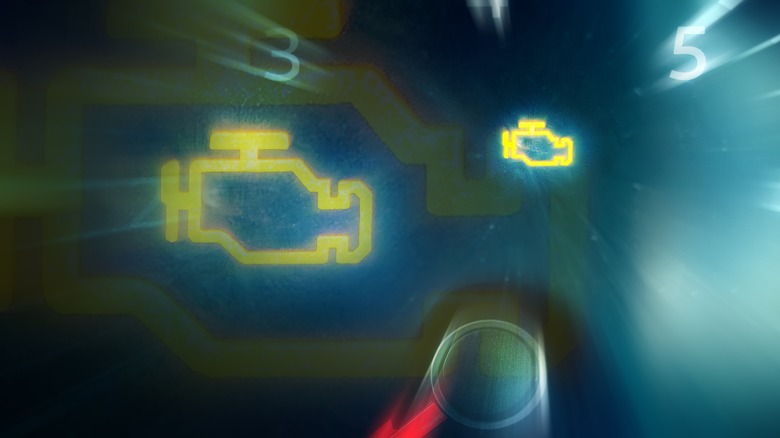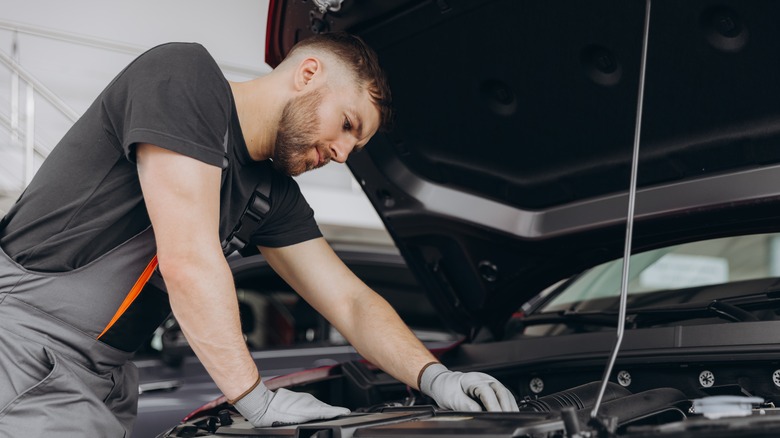Transmission Hot Idle Engine: What The Message Means And How To Fix It
Modern automobiles are equipped with a myriad of early warning signs designed to alert drivers of potential issues. Despite the fact that said warnings are meant to alert drivers to problems before they get too bad, most car owners live in muted fear that one of those warnings might light up when they're on the road, as it likely signals a pricey trip to a mechanic.
While much of that fear is directed at the dreaded check engine light, or warnings lights signaling that your engine is overheating, a less frequently seen message you should never ignore is the one stating, "Transmission Hot Idle Engine." That signal is engaged when the vehicle's powertrain control module (PCM) senses that the transmission is too hot. It goes without saying that any mechanical component overheating is a bad thing, but that's particularly true due to how transmissions work.
There are any number of reasons that a vehicle's transmission might run hot, with common causes including low transmission fluid, aggressive driving or frequent uphill driving, extreme weather, and regularly pulling heavy loads, among others. Yes, the warning message could also turn on if there's a faulty transmission fluid temperature sensor in the PCM. Unfortunately, you won't know if a faulty sensor is to blame until you visit a mechanic, which you should do ASAP when the Transmission Hot Idle Engine message appears on your dashboard display.
The transmission warning light might be an easy fix but also might not be
Before you even get to a garage where an automobile professional can search for the reason behind the Transmission Hot Idle Engine message, it's wise to pull safely off the road as soon as you can to let the transmission cool down. Failure to do so could result in extensive damage to both the vehicle's transmission and the various other components it interacts with while you're driving.
The good news is that, once you've let the transmission cool down and have safely piloted your vehicle to a certified mechanic, you may have an easy fix on your hands, as a lack of transmission fluid may have been behind the overheating. Should that be the case, all you'll need to do is top the fluid off and the issue should be resolved. Likewise, if a faulty sensor is to blame, it may just need to be replaced. It is, however, important to ensure that your mechanic does a thorough inspection of the vehicle, because if overheating did occur, other vital components might've been damaged in the process.
Since the transmission performs such essential functions, repairs could prove costly for car owners, particularly if the transmission itself needs replacing. As it is, the best ways to ensure your transmission doesn't malfunction or overheat is to take proper care of the mechanism itself, and, of course, to perform proper routine maintenance on your automobile's engine as well.

